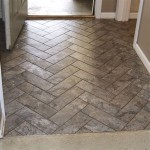Should Curtains Hit The Floor? A Comprehensive Guide
Choosing the right curtain length can significantly impact a room's aesthetic. While personal preference plays a role, understanding the various options and their effects can help create the desired atmosphere and appearance. This guide explores the question of whether curtains should hit the floor, examining the different styles available and the factors influencing the best choice for various spaces.
Floor-Length Curtains: Creating Elegance and Drama
Floor-length curtains, also known as "kissing the floor" curtains, graze the floor's surface. This style offers a sophisticated and polished look, creating a sense of elegance and formality. The extended length visually elongates the walls and windows, making the room appear taller and grander.
Puddled Curtains: Embracing Opulence and Luxury
Puddled curtains extend several inches beyond the floor, creating a "puddle" of fabric. This style adds a touch of drama and opulence, often used in formal spaces or rooms with high ceilings. The extra fabric adds fullness and softness to the overall look, enhancing the sense of luxury.
Floating Curtains: Achieving a Clean and Modern Look
Floating curtains hover just above the floor, with a clearance of approximately half an inch to an inch. This contemporary style offers a clean, crisp, and uncluttered appearance. It's a versatile option that suits various interior design styles, particularly modern and minimalist aesthetics.
Breaking the Rules: When to Consider Shorter Curtains
While floor-length and longer curtains are popular choices, shorter curtains can be appropriate in specific situations. For instance, in kitchens or bathrooms where moisture and spills are common, shorter curtains offer practicality and ease of maintenance. Similarly, in rooms with limited space, shorter curtains prevent the fabric from overwhelming the area.
Factors Influencing Curtain Length Decisions
Several factors influence the ideal curtain length for a given space. These include the room's function, the desired aesthetic, the ceiling height, and the window placement.
Room Function and Aesthetic
Formal spaces like living rooms and dining rooms often benefit from floor-length or puddled curtains to enhance the sense of elegance. In contrast, bedrooms and casual living areas might suit floating curtains for a more relaxed and contemporary feel. Practical considerations, such as the presence of radiators or furniture beneath the windows, can also influence the choice.
Ceiling Height and Window Placement
Ceiling height plays a crucial role in determining the optimal curtain length. Floor-length curtains are ideal for standard and high ceilings, while shorter curtains might be more suitable for rooms with low ceilings to prevent the space from feeling cramped. The window's placement relative to the floor also influences the choice. If the windowsill is close to the floor, floating or slightly longer curtains might be preferred to avoid excessive fabric bunching.
Fabric Choice and Weight: Impact on Drape and Appearance
The fabric's weight and texture contribute significantly to how the curtains hang and drape. Heavier fabrics like velvet or linen tend to puddle gracefully, while lighter fabrics like sheer or cotton create a softer, flowing effect. The fabric choice should complement the overall design aesthetic and the desired level of formality.
Maintenance and Practical Considerations
Longer curtains, particularly puddled ones, require more maintenance due to their contact with the floor. Regular cleaning or vacuuming is necessary to prevent dust and dirt buildup. Pet owners or households with young children might prefer floating curtains to minimize the risk of damage or staining.
Achieving a Cohesive Look: Coordinating with Room Decor
The chosen curtain length should harmonize with the overall room decor. Consider the existing furniture, wall colors, and other window treatments to create a cohesive and visually appealing space. The curtain fabric's color and pattern should complement the existing design elements, adding to the room's overall aesthetic.
Measuring for Curtains: Ensuring Accurate Length
Accurate measurements are crucial for achieving the desired curtain length. Measure from the curtain rod or track to the desired endpoint, considering whether the curtains should kiss the floor, puddle, or float. Consider the type of heading or pleats, which can affect the overall length. Accurate measurements ensure the curtains hang correctly and enhance the room's proportions.

Should Curtains Touch The Floor Expert Tips Shade Store

Should Curtains Touch The Floor Expert Tips Shade Store

Should Curtains Touch The Floor Expert Tips Shade Store

Should Curtains Touch The Floor Expert Tips Shade Store

Should Curtains Touch The Floor Expert Tips Shade Store

What Curtain Drop Do I Need Ada Ina

When You Re Hanging Curtains Should They Pool Or Not Architectural Digest

How To Hang Drapes At The Proper Height Family Handyman

Should Curtains Touch The Floor Expert Tips Shade Store

How To Choose The Right Curtain Lengths And What Avoid








